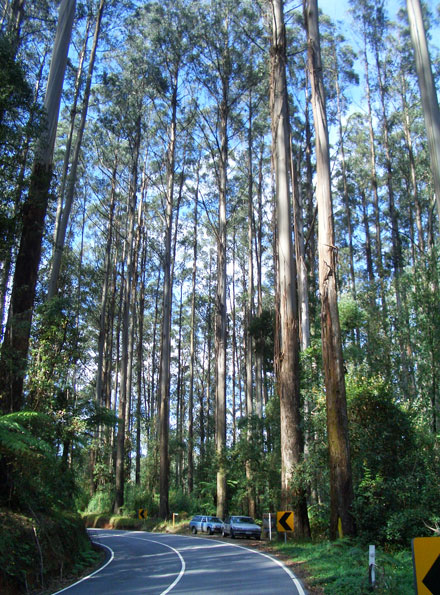Someone needs to tell the Victorian State Government how long it takes trees to grow. In fact, someone needs to really tell the Victorian State Government about trees in general. Because as has been mentioned before, it isn’t listening. Source: Bruce Mitchell
The Victorian Government has announced that the native timber industry in that State will be phased out by 2030.
That’s in nine years’ time.
To compensate, the government has announced, among other things, that it is seeking formal expressions of interest for investors and plantation developers to expand the state’s plantation timber supply.
State Government statement included the sentence: “The Gippsland Plantations Investment Program is part of the Victorian Forestry Plan’s commitment to transition from native forest harvesting to a plantation-based sector by 2030.”
The CFMEU was quick to jump on the idea, pointing out that even if the process resulted in plantation trees swiftly being planted, there was no way that any of them would be ready for use by the industry in 2030 for pulping and certainly not for solid wood product manufacturing.
Did that message get through? No.
Assistant Shadow Minister for Forestry Gary Blackwood pointed out that if the intention of the announcement was meant to give the native timber industry certainty, it had failed.
Instead, Mr Blackwood said, it had simply reinforced that jobs will be lost, and the industry closed by starving it of supply.
He pointed out that the Agriculture Minister Jaclyn Symes showed a clear lack of understanding about how long it takes to grow a tree for fibre or sawlog.
Gippsland East Nationals MP Tim Bull this week asked the Premier Dan Andrews in Parliament for the locations of the hardwood timber plantations that take at least 30 years to mature, pointing out that they should be 20-years-old right now – today – if they are to be harvestable by 2030.
Mr Bull said that while the question specifically related to replacement of hardwood timber, the answer he got related to softwood plantations, blue gum plantations and reference to future plantations.
“The Premier’s answer shows no understanding at all. Plantations of pine or blue gum do not replace mountain or alpine ash,” Mr Bull said.
There seems to be a pattern developing here.
So, if the Victorian Government won’t listen to the Opposition, forestry experts, and community leaders in the east of the State and even the CFMEU – one of its biggest and most powerful political allies – just who will it listen to?
The imminent departure of John Simon after eight years as a director, and five years as chairman of Forest and Wood Products Australia Limited will leave a huge hole.
Some of the key achievements of FWPA under John’s watch in recent years include:
- The funding of numerous research projects to improve the productivity and profitability of the timber industry
- Changes in the national construction code which has made it easier for timber commercial structures to be built, and the formation of FWPA’s voluntarily funded mid-rise advisory team
- The WoodSolutions website which this year celebrates its 10th anniversary
- The successful launch of “The Ultimate Renewable” marketing campaign
- The ongoing partnership with Planet Ark and their “Make it Wood” program
- The establishment of the Centre for Timber Durability and Design Life at the University of Sunshine Coast
- The Forest Learning program targeting schoolteachers
FWPA’s managing director, Ric Sinclair, said that John’s retirement cannot be appropriately recognised in person at the moment due to the current pandemic restrictions.
“John has been a true leader to FWPA and the broader industry, and his career has spanned the frame and truss manufacturing, timber wholesale, retail and imports and he started his career as a timber researcher,” Mr Sinclair said.
And tomorrow’s general election in New Zealand may point the way the timber industry in that country could be headed.
The forestry industry seems to be a thing on which neither major party – Labour and the Nationals – is carrying particularly palatable policies into the election.
The industry claims both parties say the policies jeopardise New Zealand’s post-COVID economic recovery and New Zealand reaching its carbon emission goals.
And, industry leaders are pointing to recent statements from both the major parties which want to restrict forest planting, as well as potential changes to the Emissions Trading Scheme.
In a country which had governments for many years which were probably rightly seen as timber friendly, the times might be changing.
The result will be interesting.






